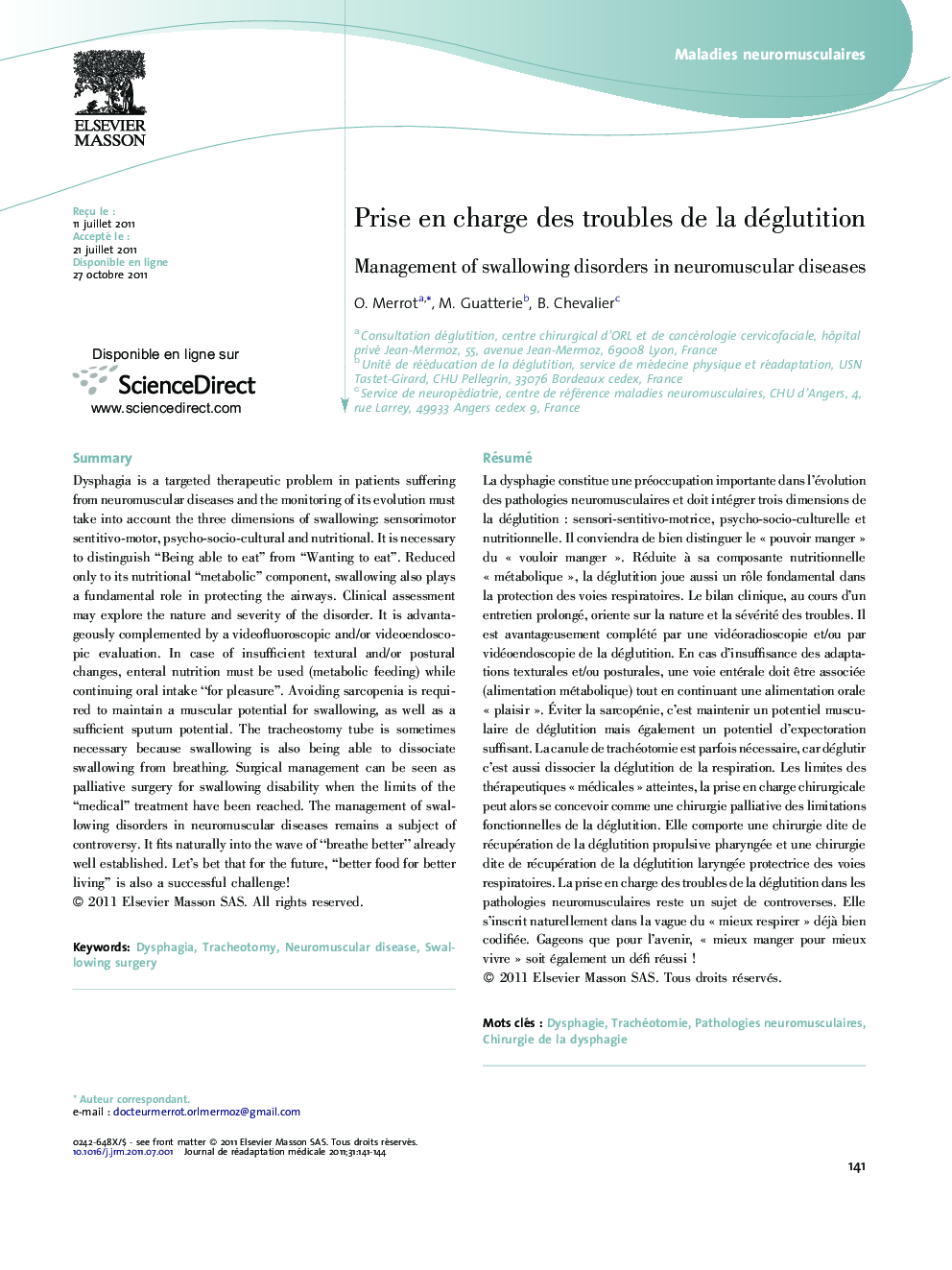| Article ID | Journal | Published Year | Pages | File Type |
|---|---|---|---|---|
| 2701055 | Journal de Réadaptation Médicale : Pratique et Formation en Médecine Physique et de Réadaptation | 2011 | 4 Pages |
Abstract
Dysphagia is a targeted therapeutic problem in patients suffering from neuromuscular diseases and the monitoring of its evolution must take into account the three dimensions of swallowing: sensorimotor sentitivo-motor, psycho-socio-cultural and nutritional. It is necessary to distinguish “Being able to eat” from “Wanting to eat”. Reduced only to its nutritional “metabolic” component, swallowing also plays a fundamental role in protecting the airways. Clinical assessment may explore the nature and severity of the disorder. It is advantageously complemented by a videofluoroscopic and/or videoendoscopic evaluation. In case of insufficient textural and/or postural changes, enteral nutrition must be used (metabolic feeding) while continuing oral intake “for pleasure”. Avoiding sarcopenia is required to maintain a muscular potential for swallowing, as well as a sufficient sputum potential. The tracheostomy tube is sometimes necessary because swallowing is also being able to dissociate swallowing from breathing. Surgical management can be seen as palliative surgery for swallowing disability when the limits of the “medical” treatment have been reached. The management of swallowing disorders in neuromuscular diseases remains a subject of controversy. It fits naturally into the wave of “breathe better” already well established. Let's bet that for the future, “better food for better living” is also a successful challenge!
Related Topics
Health Sciences
Medicine and Dentistry
Orthopedics, Sports Medicine and Rehabilitation
Authors
O. Merrot, M. Guatterie, B. Chevalier,
